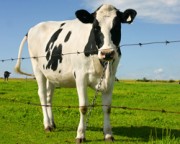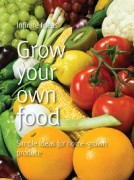Frankenburger and the great Petri dish experiment
5 August 2013 by Admin in Lifestyle
Scientists have grown a hamburger in a lab by transforming cells into muscle and combining them to make a ‘meat’ patty. The patty, inevitably christened ‘Frankenburger’ by the Daily Mail, among others, was revealed and eaten at a news conference in London today.
Pioneered by scientists in the Netherlands, this new method of growing meat is developing in response to a rising global demand for food, an issue surrounded by questions about sustainable and ethical farming. According to a BBC article, growing beef in this new way uses 45% less energy, creates 96% fewer greenhouse gas emissions and requires 99% less land than traditional beef cattle farming. So it’s easy to see the benefits.
 But these ‘hamburgers’ haven’t made it big yet. To most people the idea of a white, chemically-grown muscle mass dyed red with food colouring and flavoured to make it taste of something is as repugnant as any fast food burger could be. Surely what we really want is food that hasn’t been tampered with – not processed meat padded out with pink slime and sprayed with poisonous chemicals (studies in the US have shown that 70% of processed meat is produced in this way), and not something grown by a twenty-first century Dr Frankenstein using a few cells, a pipette and a Petri dish.
But these ‘hamburgers’ haven’t made it big yet. To most people the idea of a white, chemically-grown muscle mass dyed red with food colouring and flavoured to make it taste of something is as repugnant as any fast food burger could be. Surely what we really want is food that hasn’t been tampered with – not processed meat padded out with pink slime and sprayed with poisonous chemicals (studies in the US have shown that 70% of processed meat is produced in this way), and not something grown by a twenty-first century Dr Frankenstein using a few cells, a pipette and a Petri dish.
The idea of playing with food isn’t new by any means. The first genetically modified crop – a tomato engineered to ripen later than its natural counterparts, went on sale in 1994 (the full implications of GM crops are not yet known but in June this year, the British Environment Secretary declared the health risks of GM farming to be ‘infinitesimally small’). And then of course there’s Dolly the sheep, who made headlines in 1996 having been cloned from a cell ‘as a means of replicating the very best animals with respect to agricultural production’.
Naturally most of us would choose a cruelty-free, environmentally friendly option over the Big Mac driven, mass produced meat many of us are eating right now. But the problems we’re facing are a result of a deeply ingrained Western culture – a thriving food culture based on consumers’ needs for convenience and affordability, and a corporate lust for global domination and a fortune to boot. It’s no wonder that scientists are experimenting with new, weird and wonderful ways to meet demand. The market is there – everywhere, in fact.
 Of course, not everybody agrees that fast food is automatically bad. Some argue that it means that millions every day who would not get a hot meal any other way are fed something filling and relatively cheap. For such an alternative view of fast food read Barry Gibbons’ hilarious Five loaves, two fishes and six chicken nuggets. Gibbons writes with real authority on the subject since he was global CEO of Burger King for five years.
Of course, not everybody agrees that fast food is automatically bad. Some argue that it means that millions every day who would not get a hot meal any other way are fed something filling and relatively cheap. For such an alternative view of fast food read Barry Gibbons’ hilarious Five loaves, two fishes and six chicken nuggets. Gibbons writes with real authority on the subject since he was global CEO of Burger King for five years.
Perhaps we shouldn’t try to replace fast food, but move away from it altogether. One of the most obvious issues associated with the industry is the increasing incidence of weight problems in both adults and children. Children are often encouraged to regard fast food as a treat for behaving well, so it’s no surprise that 22% of four and five year-olds in England are overweight or obese. It’s worthwhile noting here that while more than one billion people worldwide are obese, around the same number will go to bed hungry tonight. Perhaps instead of looking for new ways to industrialise the food industry we should be focusing on farming and distribution models that redress the balance.
Happily, our attitudes are changing – the health risks of fast food are widely known and questions about ethical food are ever-present in the media – this year’s horse meat scandal being just one recent instance. But availability is key, so it’s gratifying to note the increasing visibility of sustainable fishing campaigns such as Hugh’s Fish Fight, and a growing (but yet little) quantity of ‘free range’ and organic produce in supermarkets today.
 Perhaps in the not-too-distant future we will find the time and resources to prepare fresh, healthy food with a minimum amount of locally-sourced meat. We might return to the old days of home-grown or locally farmed produce (we’ve been reading Grow Your Own Food and making the best of this year’s glorious sunshine) … we could even go continental, returning to siesta full-bellied from an hour savouring the specialities of our local café. Or perhaps we’ll all move to Asia, take up Hinduism and live plentifully on a vegetarian diet. If we want the food industry to change it’s up to us as individuals to ensure that we demand better quality food and turn our backs on the pink-slime and Frankenburger salesmen.
Perhaps in the not-too-distant future we will find the time and resources to prepare fresh, healthy food with a minimum amount of locally-sourced meat. We might return to the old days of home-grown or locally farmed produce (we’ve been reading Grow Your Own Food and making the best of this year’s glorious sunshine) … we could even go continental, returning to siesta full-bellied from an hour savouring the specialities of our local café. Or perhaps we’ll all move to Asia, take up Hinduism and live plentifully on a vegetarian diet. If we want the food industry to change it’s up to us as individuals to ensure that we demand better quality food and turn our backs on the pink-slime and Frankenburger salesmen.
